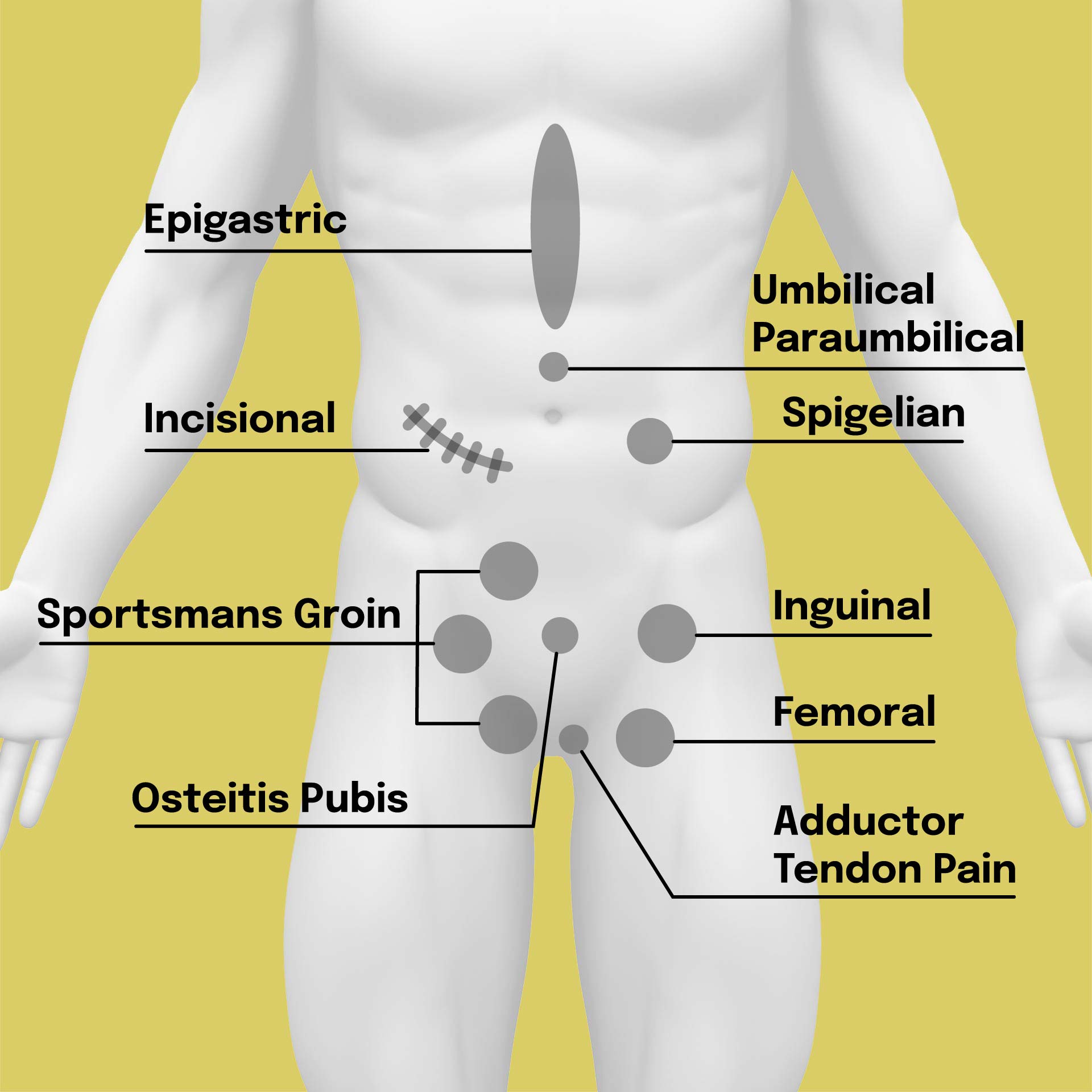Femoral Hernia
A Femoral hernia is located at the top of the thigh or groin. Specifically, it is a hernia protruding through the femoral canal, just beneath the inguinal ligament. They account for 3% of all hernias.
The femoral canal is a naturally occurring weakness and is a small and confined space. As a consequence, these hernias are at greater risk of strangulation and obstruction and should be repaired. (See complications of hernias)
Femoral herniae are seen more commonly in women than in men and are only rarely seen in children.
Symptoms and Signs
Femoral Hernias typically present with a bulge in the groin, most noticeable on standing and straining. the lump often disappears on lying down. Pain and tenderness is usually a sign of the hernia becoming irreducible.
Diagnosis
It is diagnosed clinically by the recognition of a lump which may or may not have a cough impulse in the classical position of the femoral canal, (below and lateral to the pubic tubercle).
Imaging
Ultrasound, CT and MRI may help with the diagnosis but are not usually necessary.
Alternative diagnoses
Inguinal hernia, femoral lymph node, saphena varix, femoral artery aneurysm.

